How We Evaluated the APIs
At Abstract API, our job depends on knowing when an API performs well, and when it doesn’t. To determine the best stock market data APIs of 2025, we evaluated each provider using the following 5 criteria:
- Data coverage. High-quality APIs offer extensive coverage across local and international markets, including fundamental data and supplementary insights. We prioritized APIs that support multiple exchanges, asset classes, financial news, and sentiment analysis.
- Data types. A strong API supports a variety of data formats to suit different use cases. We focused on APIs that provide real-time, intraday, delayed, and end-of-day (EOD) stock quotes, as well as tick-level and order book data for high-frequency trading.
- Ease of use. Comprehensive documentation and SDK support can drastically reduce integration time. We highlighted APIs with clear, updated docs, training resources, active support, and client libraries in major programming languages.
- Pricing and free tier. A good API should offer scalable pricing that doesn’t break the bank. While some APIs in this list offer generous free tiers for personal use, we also considered the value delivered at each pricing tier.
- Reliability and uptime. When you are in the financial sector, things tend to move very quickly: you want your data to be right and on time. Top stock market data APIs offer low-latency response times, reliable data sources, and strong uptime guarantees (SLAs).
In this ranking, there’s no one-size-fits-all solution, but quality APIs that align more or less with your technical requirements, budget, and goals. Still, by evaluating APIs through these 5 pillars, we identified providers that stand out for different needs, budgets, and technical goals.
Our Review of 2025’s Top Stock Market APIs
Finding the best stock market data APIs of 2025 isn’t easy, but it’s far from impossible. After all, we managed to pull this ranking together. What follows are 9 of the top 10 financial APIs that strike a balance between powerful insights, developer-friendly design, high-quality data, and fair pricing.
9, not 10, because the last one deserves its own spotlight. But, for now, let’s buckle up and get down to business!
Alpha Vantage
If we’re talking about the top stock market data APIs of 2025, Alpha Vantage is hard to ignore. Launched in 2017, Alpha Vantage has become a trusted source of global financial data, offering accessible and robust APIs.
Their platform features eight core endpoints: time series data, US options, fundamental data, economic indicators, technical indicators, alpha intelligence, and data on both physical (forex) and digital (crypto) currencies.
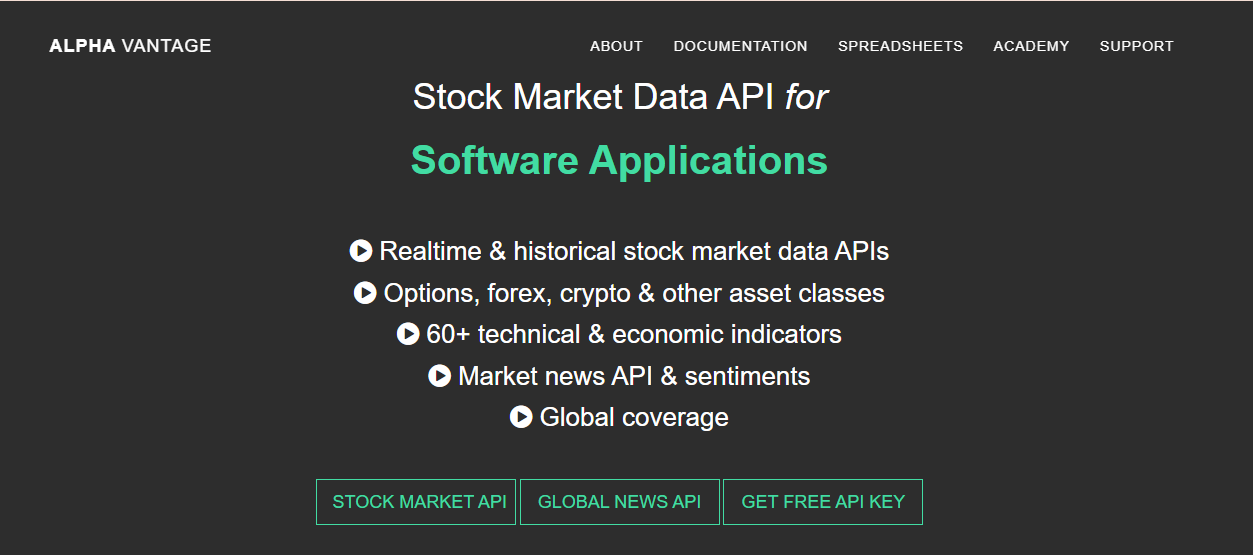
Pros
Alpha Vantage made our list for several standout reasons. Some were mentioned directly above, and some are the following:
- Accurate data, sourced through licensed partnerships with Y Combinator, Nasdaq, AWS, and the London Stock Exchange.
- Global coverage across various asset types, including advanced fields like financial news and sentiment. Offers real-time, delayed, and historical data.
- Developer-friendly documentation and onboarding materials, plus email-based support.
Cons
However, despite its strengths, Alpha Vantage does have limitations:
- The free plan is capped at 25 API requests per day and does not include real-time U.S. market data.
- To scale, users must opt for a paid plan. Pricing ranges from $49.99/mo to $249.99/mo, potentially steep for some.
Ideal Use Case
Alpha Vantage is a great fit for small teams and startups building prototypes or conducting lightweight financial research. Its free plan is also ideal for learning and low-volume applications.
Polygon.io
Another strong contender for 2025 is Polygon.io, which offers a versatile suite of REST and WebSocket APIs, plus SQL query and flat file options. Their mission is to deliver institutional-grade market data with simple, developer-friendly tools.
Polygon.io covers real-time stock data from all U.S. exchanges, including dark pools and OTC markets, as well as historical data going back to 2003. It also supports options, indices, forex, crypto, and futures, both historical and real-time, at under 20 ms latency.
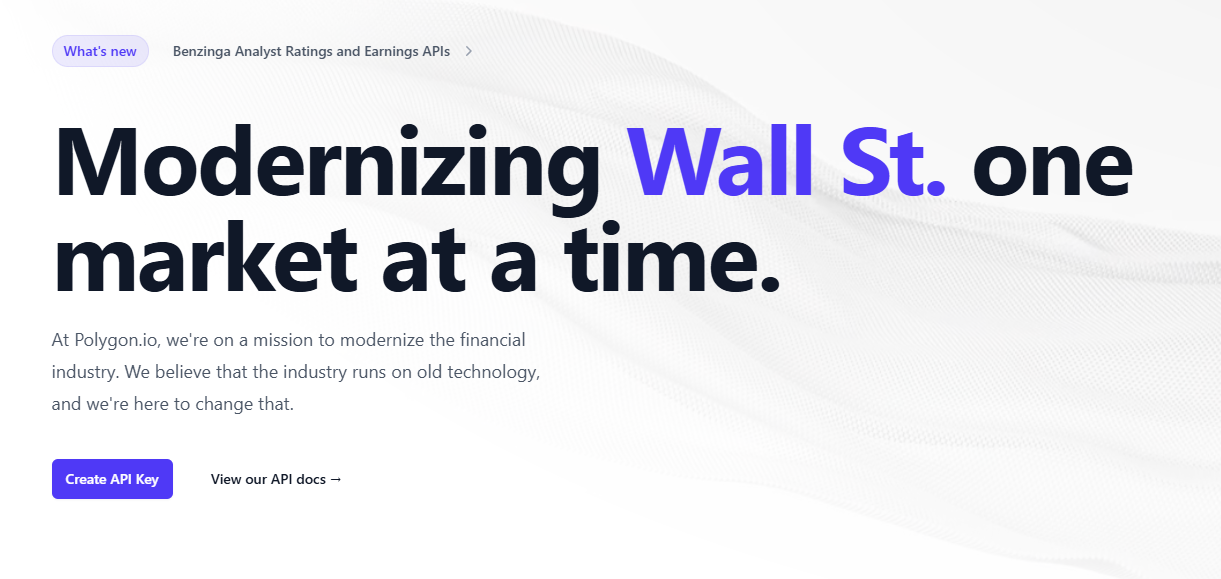
Pros
Polygon.io stands out for:
- Excellent documentation, tutorials, and client libraries that simplify implementation.
- Standardized data formats (JSON, CSV) make it easier to process and integrate.
- Reliable data from trusted sources like NYSE, Nasdaq, Cboe, Coinbase, Finra, and OTC, minimizing failure points and ensuring faster updates.
Cons
Still, it’s not without drawbacks:
- The free plan provides only limited access to 2 years of historical data and no real-time quotes.
- Real-time data is locked behind the Stocks Advanced plan ($199/mo), and professional plans start at $1,999/mo or require custom pricing.
- Polygon.io is U.S.-centric, with no support for international exchanges.
Ideal Use Case
Polygon.io is ideal for developers building dashboards, financial reporting tools, or historical data analytics platforms. Thanks to its horizontal scalability, it serves both individual developers and enterprise teams effectively.
Intrinio
Another top stock market data API of 2025 is Intrinio, a platform offering extensive coverage across asset classes, with insights on stocks, options, ETFs, mutual funds, ESG data, index constituents, and corporate events.
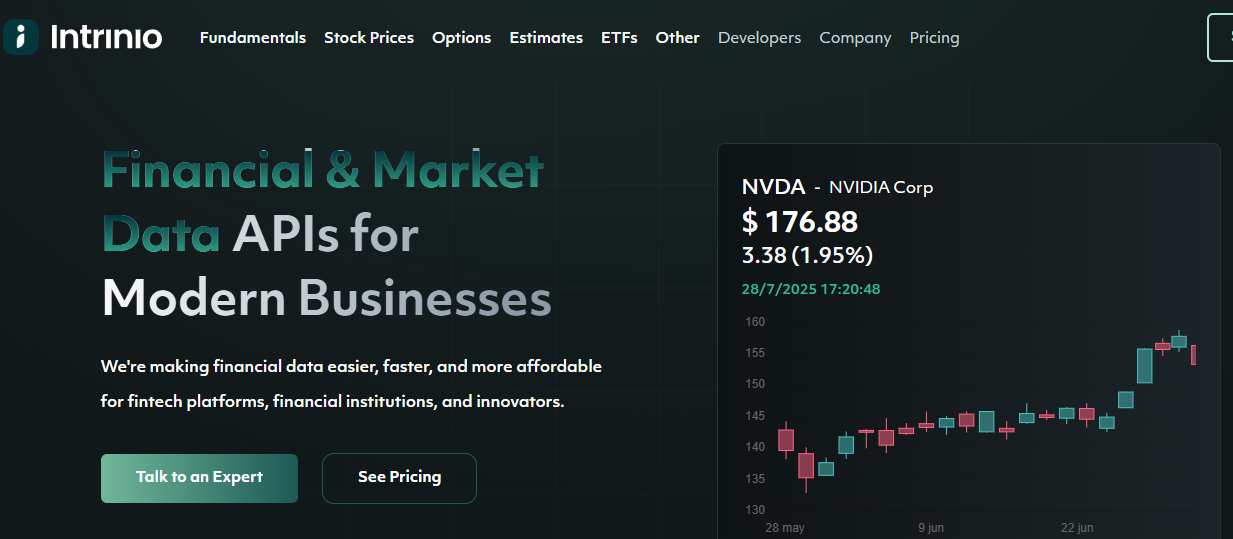
Pros
Why is Intrinio one of the best stock market data APIs of 2025? At Abstract API, here’s our pick:
- Broad asset class coverage, both U.S. and international. Depending on the endpoint, data can be real-time, EOD, tick-level, delayed, or historical.
- Strong developer support, with online documentation, a Help Center, and both email and live chat assistance.
- Clean, chart-based data visualization makes it easy for even beginner users to interpret market insights.
- Historical data goes back as far as 50 years.
- High reliability, with public uptime tracking.
Cons
Intrinio is feature-rich, but its pricing structure can be limiting:
- There is no free plan, only time-limited trials.
- Subscriptions are billed annually, with plans ranging from $3,000 to $9,000 per year.
- Data access is segmented; you pay separately for each type of data set, which can add up quickly.
Ideal Use Case:
Intrinio is ideal for early-stage fintech platforms or trading applications looking to bypass exchange fees while offering real-time stock data. It also performs well for advanced backtesting.
Nasdaq Data Link (Quandl)
Formerly known as Quandl, Nasdaq Data Link is a robust financial data platform trusted by institutional users worldwide. With over 20 million indicators from 250+ sources, it delivers deep, curated global insights, though with a U.S. bias.
Supported data types include prices and volume, earnings estimates, fundamentals, corporate actions, alternative data, and macroeconomic indicators. Datasets can be real-time and historical.
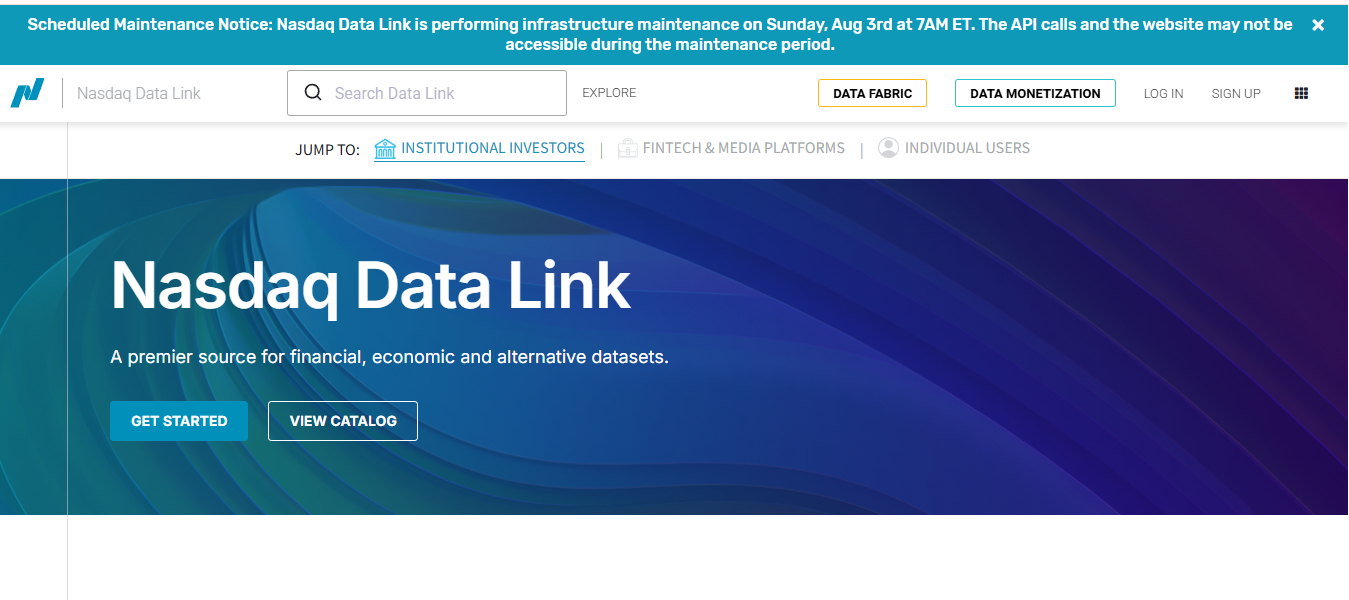
Pros
Nasdaq Data Link offers other features that make it a premium source for stock market data. Particularly:
- Extremely deep historical data, dating back to 1979.
- Curated insights that are objectively actionable.
- Free accounts are available for personal use.
- Responsive customer success team.
- Custom pricing based on specific use cases and datasets.
Cons
Still, this API has a downside, featuring the following cons:.
- The free plan has very limited access and doesn’t guarantee data freshness or update frequency.
- Update intervals for some datasets can be inconsistent, ranging from hours to months, or even longer.
- Coverage, while broad, is more U.S.-focused than global.
Ideal Use Case
Nasdaq Data Link is great for developers who need access to diverse financial and economic data, including alternative data sources, for macro analysis or investment research.
Marketstack
Looking for a simple yet powerful stock market API? Marketstack offers extensive data coverage with a lightweight, developer-friendly interface.
This API delivers real-time, intraday, and historical data from 70+ global exchanges, covering over 30,000 tickers, 750 indices, and more than 15 years of EOD data. It uses a simple REST framework, where requests are made via HTTP GET, and API responses are delivered in JSON.
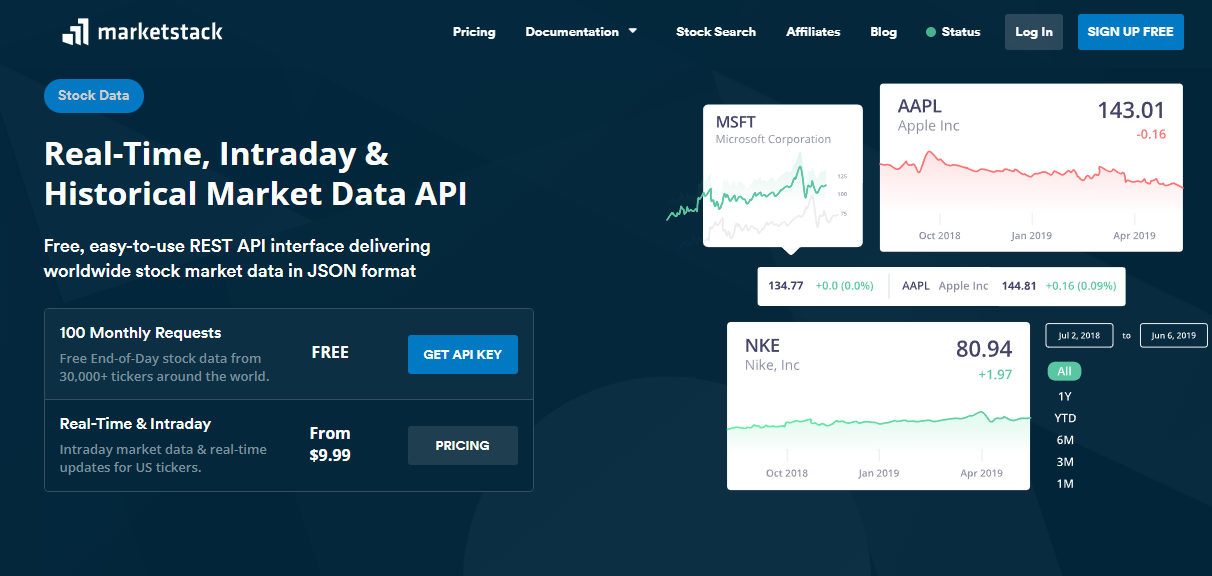
Pros
Most relevant strengths of this API include
- Clear, minimal documentation with interactive demos and code samples in multiple languages.
- Secure HTTPS encryption, even on the free tier.
- Reliable data sourced from major providers like NYSE, Nasdaq, LSE, TSX, SSE, and others.
- Near-perfect uptime with real-time system status monitoring.
Cons
Marketstack API has some minor inconveniences, especially compared with other stock market data APIs such as Alpha Vantage or Abstract API’s. For instance:
- Intraday U.S. stock data is only available on paid plans.
- Free tier lacks customer support and limits historical data access to one year.
- All paid plans are billed annually, which may not suit all users.
Ideal Use Case
Ideal for beginner developers or finance enthusiasts seeking easy-to-integrate APIs for personal projects without a steep learning curve or high upfront costs.
Finnhub.io
Finnhub.io is a high-performance market data provider built by ex-engineers from Google, Bloomberg, and Tradeweb. In 2025, it remains a favorite for developers needing institutional-grade financial, fundamental, and alternative data.
This finance API offers real-time, delayed, and historical data (up to 30 years) for global markets, plus additional insights such as sentiment, ESG scores, news, congressional trading, and lobbying data.
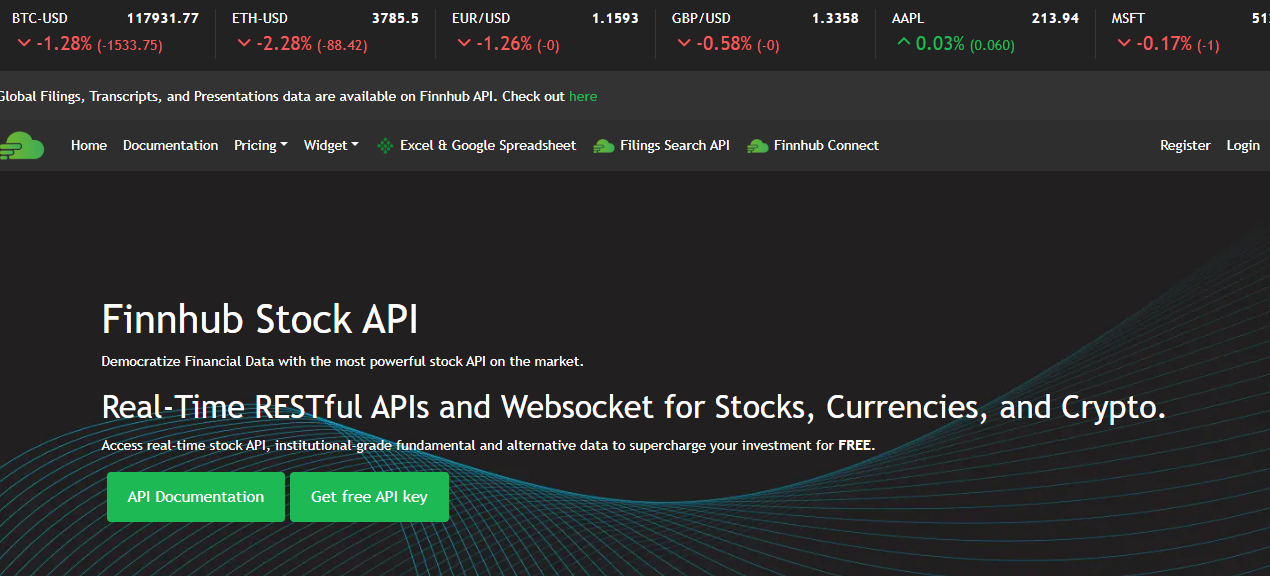
Pros
What is it that makes Finnhub.io one of the top stock market data APIs of 2025? At Abstract API, we believe that it’s the following:
- 99%+ uptime, with an enterprise SLA available.
- Scales automatically to support complex workloads.
- Generous free tier with 60 API calls/minute for personal use (U.S. market focus), and extensive data coverage.
- Dedicated support portal, email support, and full documentation.
Cons
Great APIs, such as Finnhub.io, can still pose some drawbacks:
- Most plans are for personal use; only one commercial plan is available.
- Global coverage is only included in the Professional plan ($199.99/month, billed annually).
- Many data types are sold separately, which may increase total costs for broader use cases.
Ideal Use Case
Perfect for researchers, developers, and advanced users building trading platforms, conducting real-time analysis, or developing financial dashboards requiring alternative and granular insights.
EODHD (EOD Historical Data)
EODHD provides a suite of financial APIs with strong support for both U.S. and international markets. Its offering includes historical, EOD, and live stock data, alongside fundamentals, forex, crypto, macroeconomic indicators, and financial news.
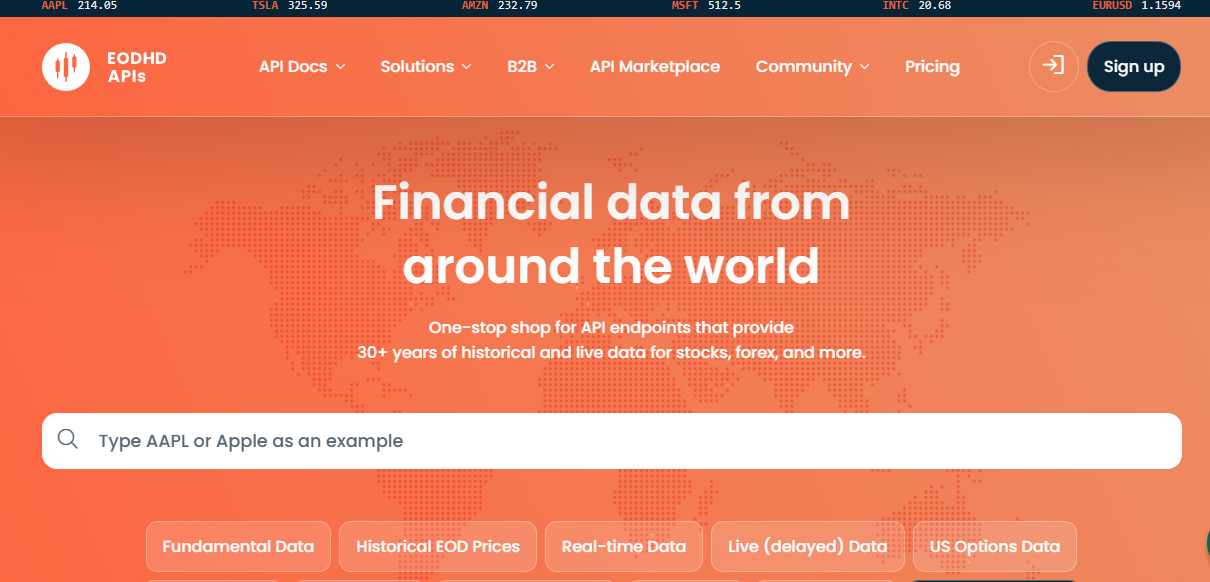
Pros
EODHD offers some exceptional features that make it a top-tier API. For instance:
- Broad historical depth: 30+ years of EOD data, 60+ exchanges, 150,000+ stock tickers, and 1,100+ forex pairs.
- No-code-friendly add-ons for faster implementation.
- High-quality data sources, including Nasdaq, Cboe, Benzinga, the SEC, and S&P Global.
- 24/7 support via live chat and documentation for multiple programming languages.
Cons
Still, it has some disadvantages:
- Free tier is limited: only 20 API calls per day and one year of historical data.
- Access to real-time and fundamental data requires paid plans.
- Commercial-use plans are significantly more expensive and cap usage at 100,000 calls/day.
Ideal Use Case
EODHD is especially useful for long-term backtesting or historical analysis, making it a strong choice for developers validating trading and investment strategies.
Tradier
Tradier is a trading platform featuring Tradier Brockerage, one of the best APIs for retrieving stock market data in 2025. Its standout feature? Free API access for all users, including those on the Lite (free) plan. This cuts down on upfront costs when developers are already on the platform.
The API offers level 1 data for the U.S. stock market, including real-time, delayed, and historical insights for stocks, ETFs, options, and indices.
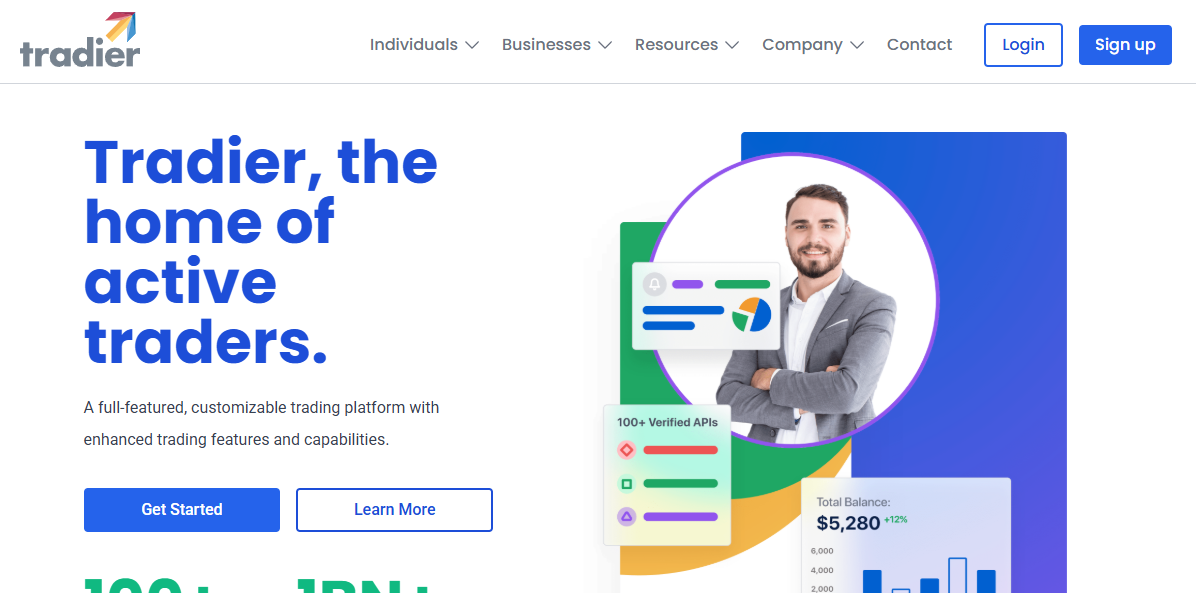
Pros
The Tradier API offers a series of benefits:
- Easy-to-integrate REST API with good documentation and support.
- High uptime, with public system status monitoring.
- Email support and example scripts are available.
- Customizable watchlists for tracking user-specific investments.
Cons
But not everything that shines is gold. Tradier’s API has some disadvantages:
- API access is limited to Tradier users.
- Historical data may not always be adjusted for dividends or splits.
- Usage is restricted to personal projects unless you become a Tradier Partner.
Ideal Use Case
Tradier Brockerage is perfect for Tradier users building custom apps for personal portfolio tracking or financial dashboards. It’s also an efficient way to prototype without incurring additional data costs.
Yahoo Finance
Once the gold standard for free market data, Yahoo Finance’s API is no longer officially maintained, but still widely used via third-party libraries like yfinance.
The API offers access to real-time, delayed, and historical data backed by Nasdaq and OTC feeds. Despite its limitations, it remains popular among hobbyists and researchers.
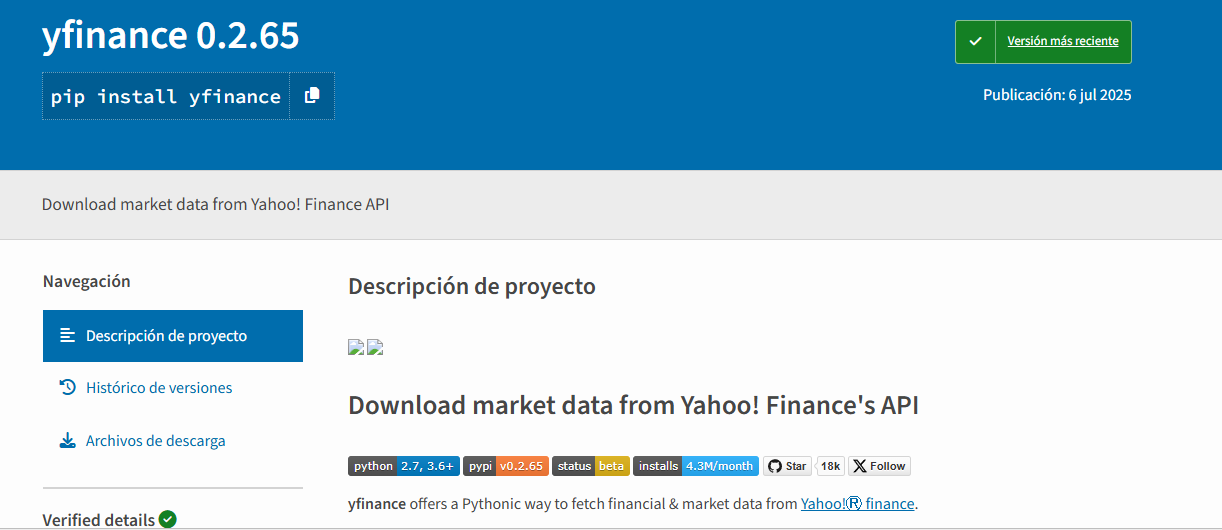
Pros
Yahoo Finance is still one of the most popular stock market data APIs for the following reasons:
- No account required, just install a library like yfinance to start querying data.
- Beginner-friendly interface, easy integration with Python and JavaScript, great for rapid prototyping.
Cons
Despite this, Yahoo Finance users can experience some major issues, including:
- No support or service guarantees, as API access is unofficial.
- Limited rate and data coverage.
- No premium insights like fundamentals, sentiment, or news.
- Unpredictable reliability and availability.
Ideal Use Case
Best suited for tech-savvy users who are comfortable with unofficial methods and scraping techniques. Great for small-scale personal research, provided reliability isn't mission-critical.
The Abstract API Stock Market API
Last, but definitely not least, one of the best stock market data APIs is Abstract API’s Exchange Rates & Currency API.
Last, but by no means least, Abstract API offers one of the most accessible stock market APIs in 2025. Designed for developers who need a fast, reliable, easy-to-integrate solution, it delivers reliable exchange rate and currency data with a clean, RESTful interface.
Abstract API’s stock market data API supports 150+ global currencies (forex and crypto), with real-time and historical pricing. Data is sourced from trusted authorities like the ECB and Bank of Japan, and updated every 60 seconds (on paid plans) or 45–60 minutes (free plan).
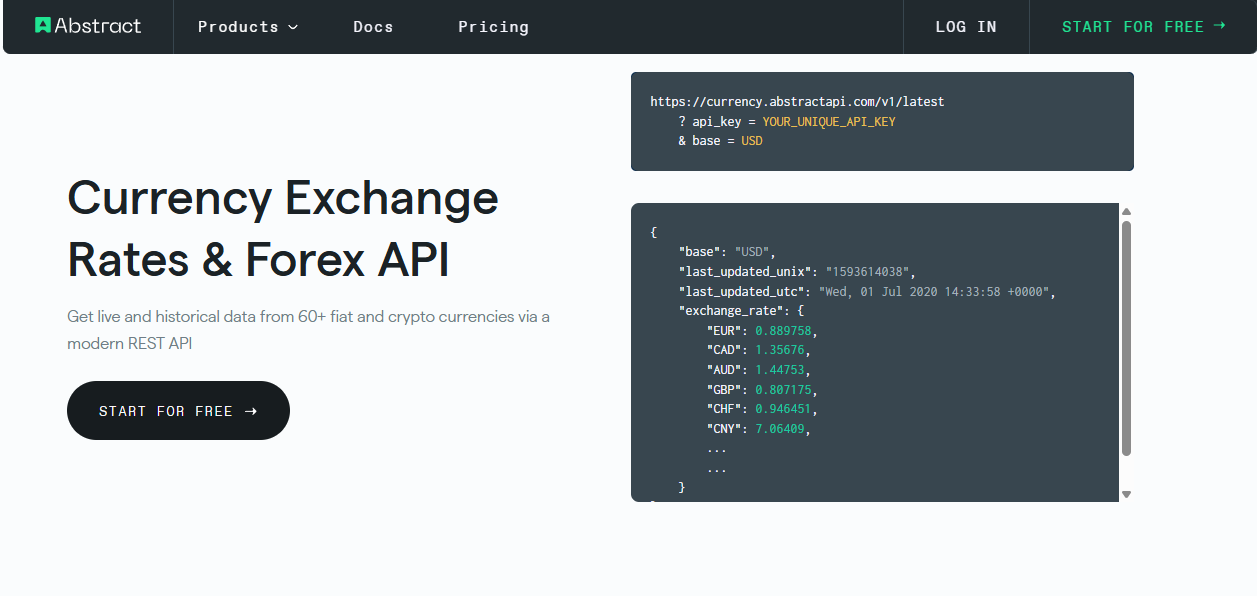
Pros
What makes Abstract API’s Exchange Rates & Currency API a standout among financial APIs? According to our customer reviews, the following features:
- Fast, secure, and easy-to-integrate RESTful design.
- Comprehensive documentation with code samples, SDKs, and libraries.
- 24/7 technical support via email, chat, and phone.
- Generous free tier (500 requests/month), perfect for startups and personal projects.
- Escalable pricing, depending on the number of API calls per month.
- 99.99% SLA uptime and enterprise-grade encryption (256-bit SSL).
Cons
At Abstract API, we strive to build software that works seamlessly and serves a wide range of users. Still, we’re not Bruce Almighty and have some limitations of our own. In the case of our Stock Market Data API, there’s one:
- Current data coverage is restricted to exchange rates and currency markets, making it ideal for specialized use cases.
- For broader market data needs (like equities and options), it may need to be combined with other APIs, such as IBAN Validation, Company Enrichment, and VAT Validation & Rates APIs.
Ideal Use Case:
Ideal for developers building dashboards, financial apps, currency-focused features, or integrating stock data into a business. It’s also great for startups looking for a dependable and low-barrier entry point to financial data.
Stock Market APIs in 2025. Choosing Smarter, Choosing Right
The stock market runs on fast-moving insights and ever-changing datasets: nothing stays fixed for long. Accessing it through a reliable, constantly updated API is essential if you want to navigate that jungle of numbers and make it out alive.
Top stock market APIs in 2025 are built to support a wide range of financial applications and data needs. But the best API is the one that fits your project, not just the one with the longest feature list or the flashiest extras you’ll never use.
Our final take?
- If you need the broadest set of niche historical data, services like Alpha Vantage and Finnhub.io are solid choices.
- Apps that rely on real-time U.S. data will benefit from Polygon.io or Tradier.
- And for developers looking for the sweet spot, powerful features, global coverage, simplicity, and a generous free tier, AbstractAPI’s Stock Market API is your go-to tool.
Keep our 5 key criteria in mind, define your needs clearly, and choose wisely.
Because smarter programming starts with the right tool.



